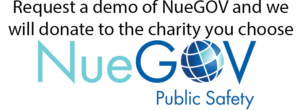Emergency Medical Services (EMS) play a crucial role in providing medical attention to individuals in need during emergencies. The equipment used by EMS personnel is vital for saving lives and providing effective care in critical situations. However, managing this equipment and assets effectively can be a significant challenge for EMS organizations.
One of the primary challenges in EMS equipment and asset management is the constant need for maintenance and repairs. Medical equipment can be costly and needs to be in top working condition at all times. Failure to properly maintain equipment can result in it breaking down during an emergency, putting the lives of patients and EMS personnel at risk. To overcome this challenge, EMS organizations must invest in regular maintenance and upkeep of their equipment and establish a system for tracking and scheduling these maintenance activities.
Another challenge faced by EMS organizations is the high cost of purchasing new equipment. With constantly advancing medical technology, it can be tempting for organizations to purchase the latest and greatest equipment to provide the best possible care. However, with limited budgets, this can be a significant financial strain on the organization. To overcome this challenge, EMS organizations can implement a cost-effective asset management system that allows them to make informed decisions about purchasing and replacing equipment based on their budget and needs.
Losing track of equipment and assets is another common challenge faced by EMS organizations. With the fast-paced nature of their work, it can be easy for equipment to get misplaced or lost. This not only puts the organization at a financial loss but also affects the delivery of care to patients in an emergency. To overcome this challenge, EMS organizations can implement an asset tracking system that helps them keep track of their equipment and assets at all times.
Finally, the fast-paced and dynamic nature of EMS work can also make it challenging to manage inventory levels effectively. Ensuring that adequate equipment and supplies are available when needed can be a significant challenge. To overcome this, EMS organizations can establish a system for monitoring inventory levels and ensuring that supplies are replenished regularly to meet the needs of their personnel.
In conclusion, effective equipment and asset management is crucial for the success of EMS organizations. By overcoming the challenges of maintenance, cost, asset tracking, and inventory management, EMS organizations can ensure that their equipment and assets are always ready to provide the best possible care to individuals in need during an emergency.
Get a product demo of NueGOV and we will donate to the charity of your choice. Click here for information.

